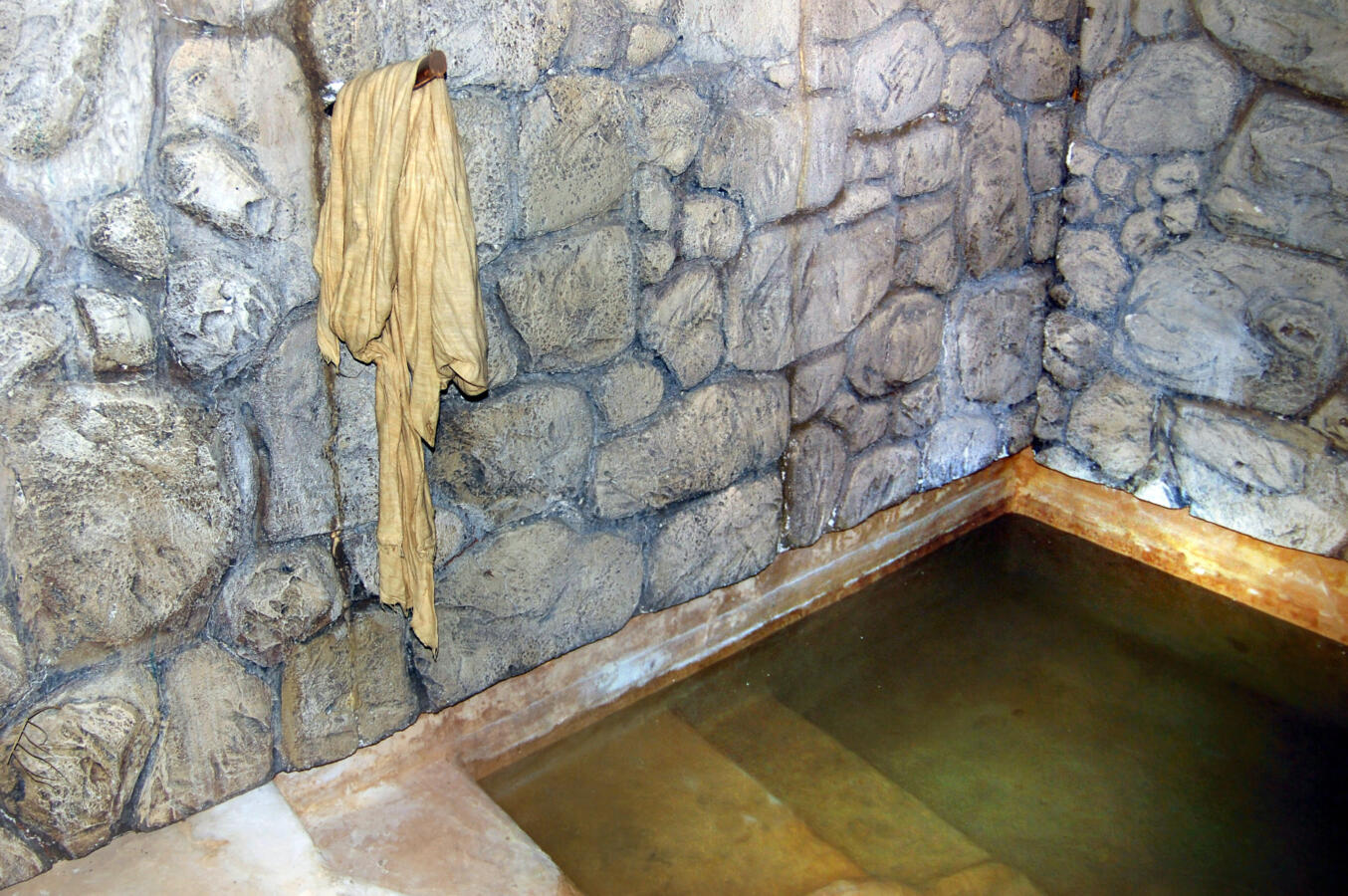The Hebrew Bible and Talmud both deal extensively with states of impurity and purity — tumah and taharah — that can affect both objects and people. Although sometimes translated as “unclean” and “clean” this is not about dirt, and often it has no moral valance. Rather, the terms connote a sense of ritual fitness or unfitness for various purposes. In this article, we offer an orientation to the complex rabbinic system of tumah and taharah.
There are six distinct aspects to tumah and taharah. First is the source of tumah. Second, the severity of tumah. Third, its modes of transmission. Fourth, the susceptibility of a person or item to becoming tamei (impure). Fifth, a person or item’s sensitivity to tumah. Sixth, purification rituals that can reverse impurity.
The rules are complex and the exceptions more so. Seder Toharot, the sixth and final order of the Talmud, generally concerns itself with these issues. Below is a brief introduction to these topics.
Sources of Tumah
The Torah describes a number of sources of tumah which can be broken down into two basic categories. The first, are external sources of tumah, such as humans (tumat meit) and certain animals (n’veila) and rodents (sheretz) that have died. These items are by their very nature tamei and coming in contact with them will make a person tamei. The second category are situations where the person internally, due to a change in his own body, becomes tamei (i.e., the tumah flows from the person himself). Examples of this include, a zav (a man with abnormal discharge), zavah (a woman with abnormal discharge or a niddah — a menstruant), yoledet (one who has recently given birth) and a metzorah. These persons have the power to transmit tumah as well.
With your help, My Jewish Learning can provide endless opportunities for learning, connection and discovery.
Severity of Tumah
Not each source of tumah is created equal. A corpse is the highest level of tumah and is called an avi avot hatumah (the “father of the father of impurity” — the ultimate source of tumah). Its severity is most notable in the way it transmits tumah and its purification ritual (i.e., sprinkling of the mei chatat — spring water mixed with ashes of the Red Heifer). Most other sources of tumah are called avot hatumah (“father of impurity”). Their severity can be seen by the fact that certain fluids that emanate from their bodies (e.g., saliva) are avot hatumah as well.
Importantly, as tumah is transmitted from one person or item to another, it typically steps down a level of severity. Therefore, if an av hatumah touches a person or item, the person will become a rishon (first derivative). A rishon will create a sheini (second derivative). A sheini will create a shlishi (third derivative). A shlishi will create a revi’i (fourth derivative).
There are, however, certain exceptions to the step down in severity paradigm. First, in certain instances the transmitted level of tumah remains the same, i.e., an av hatumah will make the recipient an av hatumah as well (for example, the cushion on which a zav sits — which likely absorbs some of the flux — will likewise be an av hatumah capable of transmitting tumah). Second, certain avot have the power, so long as they remain in direct contact with a person, to turn that person temporarily into an av hatumah as well. Finally, the sages decreed that liquids, even when touched by a sheini (someone with second degree impurity), will always become a rishon, with the capabilities of even making vessels impure.
Modes of Transmission
The most typical mode of transmission is via touch. If an av hatumah touches a person, that person will become a rishon (first derivative). If that person then touches an apple, the apple will become a sheini (second derivative). Similarly, if a person wearing a glove touches a sheretz (which is an av hatumah) the glove will be a rishon and the person will remain pure.
In addition to direct touch, a corpse’s tumah spreads via tumat ohel — literally, “tent impurity,” impurity that is contracted by sharing the same space — in one of three ways (i) by being under the same roof as the corpse, (ii) the corpse hovering over a person or (iii) a person hovering over the corpse. In the case of being under the same roof, everything in the house will become tamei. The one main exception are earthenware pots (klei cheres). These cannot become tamei via touch on the outside; rather only by their interior space being exposed to tumah (therefore, if a pot remains lidded and sealed in a house that has a corpse in it, both the vessel and its contents will remain tahor).
A zav, zavah, yoledet and metzorah can also transmit tumah via leaning on an item, carrying (even without touching) an item or being carried by an item or person. These laws are very complex and can be found in the final chapter of Tractate Zavim.
Susceptibility to Becoming Tamei
There are differences in susceptibility between a person, their utensils, and their food. People and most non-food items are susceptible to tumah at any time. No preconditions exist. A vessel, however, will only become susceptible to tumah when it is close to its finished state (i.e., a piece of wood which has not yet been shaped into a bowl is not susceptible to tumah).
Food’s susceptibility to tumah is far more complex. The rabbis learned that prior to becoming susceptible to tumah, food must have become consciously wet (i.e., washed with water or other liquid). In the language of the Mishnah, huchshar l’kabel tumah. Therefore, if after picking an apple off the tree you guard it from ever becoming wet, that apple is not capable of becoming tamei.
Sensitivity to Tumah
Sensitivity to tumah is influenced by both the type of item and its intended purpose. At its most basic level, tumah will not extend beyond a rishon (first derivative) and in rare occasions a sheini (second derivative). So, for instance, a person and keilim (utensils), can only become tamei from an avi avot or an av hatumah so that they will become, at worst, a rishon. There is no sheini l’tumah for a person. (A utensil can under certain circumstances become a sheini if touched by a liquid rishon.)
Foods are more sensitive to tumah and can become a sheini. Liquids, being even more sensitive, per the sages, will always remain a rishon.
The above rules are for hullin, non-consecrated food. However, the sages identified a number of levels of sanctified foods and liquids that, given their levels of holiness, are more sensitive to tumah — and hence, more susceptible as well. These levels are as follows:
- Ma’aser Sheini (the second tithe). It was brought to Jerusalem and was to be eaten in a state of taharah.
- Terumah: The portion of the crop given to the priests. It could only be eaten by the priest and his family. It’s holiness level made it susceptible of becoming a shlishi (third derivative).
- Kodshim: sacrificial meat and bread. It’s holiness level made it susceptible of becoming a revi’i (fourth derivative).
- Mei Chatat: at its core, the heightened level of holiness and its sensitivity to tumah gave the waters of the red heifer purification ritual no limit to level of tumah to which it was susceptible. In other words, so long as there was somewhere in the chain some very low level of tumah, it gets passed along as if it were a severe tumah — despoiling the mei chatat.
The corollary to this sensitivity to tumah is the requirement that a person likewise take more focused and, at times, stringent, measures when purifying himself prior to consuming and/or handling each successive level of consecrated food. What works to ensure purity for terumah may not work for kodshim. As you move up each level in purity, it demands more scrutiny in the chain in purity.
Purification Rituals
Once impure, a person and/or most items will remain in that state until they undergo a purification ritual. These diverse rituals will depend on the source and level of tumah trying to be cleansed. The most typical form of purification ritual is submerging oneself or the item in a mikveh. This works for most situations. For some forms of tumah, rather than a mikveh, the source of water must be a flowing spring of water. Finally, cleansing tumat meit — impurity via contact with a corpse — requires, in addition to submersion in a mikveh, the sprinkling the mei chatat on the person or item.
Notably, earthenware vessels cannot be cleansed of tumah except by shattering the vessel. In addition, food cannot be cleansed in any instance.



